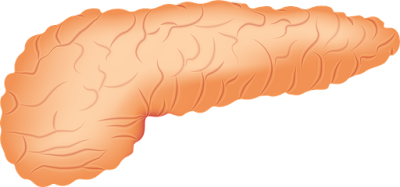Copenhagen diet and other weight loss diets
The Copenhagen diet and other diets
The Copenhagen diet is a thirteen-day, very strict weight loss diet. It owes its name to the claim that it was developed by doctors from one of the clinics in Copenhagen.To what extent is this true? It is difficult to say, although given the fact that this diet definitely contradicts common sense and has little to do with real dietetics, it also has little to do with common weight loss. Why? This is determined by the rigour of the diet.
Limitation of the amount of food
In fact, by staying on a diet Copenhagen , we provide the body with so little food, and in addition, so little variety, that it is not surprising that the body starts to rebel at some point.He rebels to such an extent that he slows down his metabolism, which in turn makes slimming more and more difficult. Over time, it may even become impossible. The Copenhagen diet assumes such a large reduction in the amount of nutrients consumed that most systems, including the endocrine system, are deregulated, which in a straight line results in the deregulation of the hormonal economy.
In a word, the risk on this diet is high, although it must be admitted that its supporters are right that in the initial phase of the diet the weight is decreasing, and at an express rate. This is due to the loss of water. Next, the muscles may burn, the subcutaneous fat, which is what is our biggest problem, we burn only at the end.
The Copenhagen diet and other diets
The Copenhagen diet is not the only one that is so strict and so harmful. Last but not least, the 1000 kcal diet, which our dietitians invented and continue to promote, is no less harmful.The 1000 kcal diet, although it seems to be a more varied diet than the Copenhagen diet, leads to the appearance of exactly the same destructive phenomena that threaten people who are slimming down the Copenhagen model. The 1000 kcal diet, like the Copenhagen diet, is so drastic that it can only be used by healthy people for a very limited period of time.
Another dietary failure is the Cambridge diet, developed by so-called scientists, which consists in eating and weight loss of specially prepared foods. These foods are specially prepared meals that are supposed to theoretically satisfy the needs of a person who is slimming down for all the necessary macro- and micro-nutrients, at the same time enabling the discharge of a considerable amount of kilos, but on the other hand it is worth knowing that these foods are synthetics and it is rather difficult to count on that thanks to them anyone will lose weight healthily and safely. Unfortunately, miracles do not happen and on such strict diets it is difficult to maintain health and complete safety.
Much more sensible proposals are, for example, the southern beaches diet, the Mediterranean diet and, last but not least, several other special dietary models promoted by some clinics. However, it seems that from the point of view of our health and the effectiveness of weight loss, and to protect ourselves from the iojo effect, by far the best dietary model is a low-carbon carbohydrate diet, which will not harm most of us, and in some of us may even cure certain diseases.
Copenhagen diet plan
Lunch and dinner can be alternated with each other if done on the same day. The diet aims to change your metabolism, leading to the fact that after day 13 you can eat normally without fear of getting fat for the first two years. If you carry out the diet rigorously, you will lose excess fat (7-20 kg). The treatment is carried out for 13 days and not one day more or less.
If during the treatment you drink a glass of wine, beer, eat sweets or chew gum, eat extra food, you stop the treatment immediately and the effect is lost. If the treatment is interrupted before 6 days have elapsed, it can be repeated after 3 months. If you have done everything point by point, you absolutely cannot repeat the treatment any sooner than after one year.
However, it is recommended that the treatment is repeated after 2 years (if needed). Due to the length of the treatment it is difficult to plan, make sure you are not invited to a friend's birthday or other party during this time.
If you are hungry - drink a glass of water. Drink at least 2 litres of water a day!!!
Day 1 and 8 of the diet (Monday):
* Breakfast - a cup of black coffee and a sugar cube.
* Lunch - 2 hard boiled eggs, cooked spinach (or broccoli) and tomato.
* Dinner - large beefsteak, salad with oil and lemon
Day 2 and 9 of the diet (Tuesday):
* Breakfast - a cup of black coffee and a sugar cube.
* Lunch - large steak, salad with oil and lemon, large fruit.
* Dinner - slice of ham, 2/3 glass of natural yoghurt.
Day 3 and 10 of the diet (Wednesday):
* Breakfast - mug of black coffee with a sugar cube, toast.
* Lunch - Cooked spinach,1 tomato and 1 fresh fruit.
* Dinner - 2 hard boiled eggs, 1 slice of ham, salad with oil and lemon
Day 4 and 11 of the diet (Thursday):
* Breakfast - a cup of black coffee and a sugar cube.
* Lunch - 1 hard-boiled egg, 1 grated carrot, small packet of natural cottage cheese.
* Dinner - small tin of fruit compote, 2/3 cup of natural yoghurt.
Day 5 and 12 of the diet (Friday):
* Breakfast - 1 large grated carrot with lemon.
* Lunch - 1 large fish with lemon
* Dinner - beefsteak, lettuce and broccoli.
Day 6 and 13 of the diet (Saturday):
* Breakfast - cup of black coffee with a sugar cube and one toast.
* Lunch - chicken (braised breast), salad with oil and lemon.
* Dinner - 2 hard boiled eggs, 1 large carrot.
Day 7 of the diet - Sunday
*Breakfast:cup of tea without sugar.
*Lunch: a piece of lean grilled meat.
*Dinner: nothing.



Comments
Post a Comment